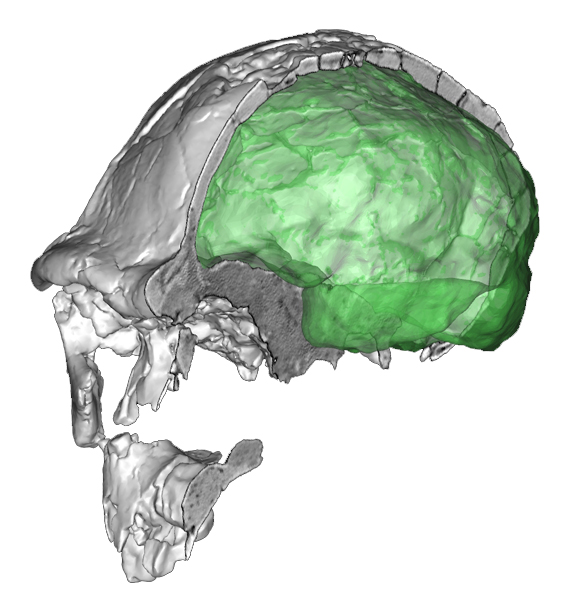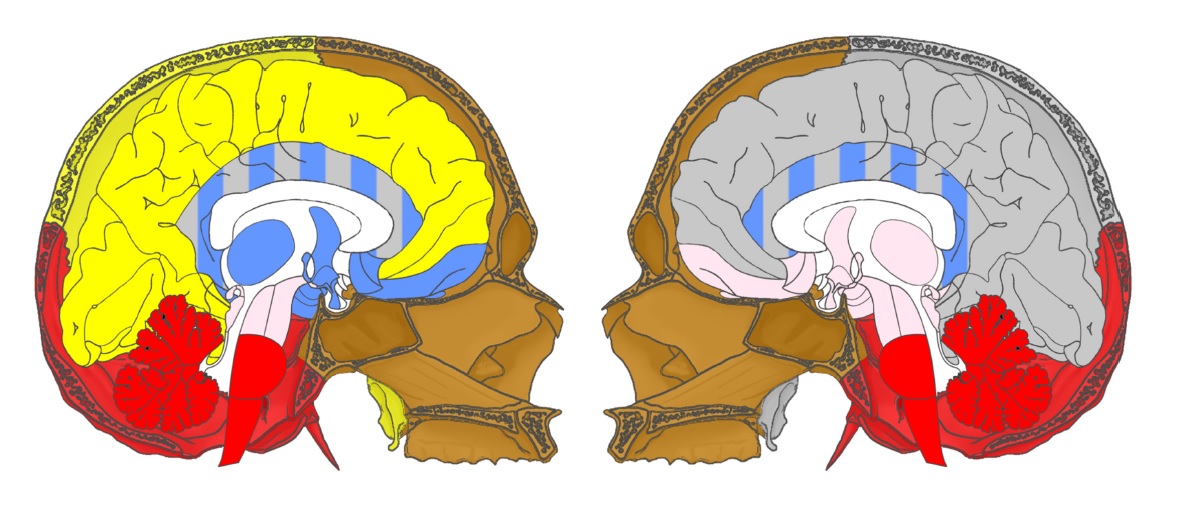In the last years, we have been using network analysis to investigate the topological organization of the human brain, not in terms of connections but of spatial constraints. We have applied this approach to the Brodmann’s map and to a comprehensive brain model, also to consider the modular organization of its elements. Now, we have added the skull. The new model points to the sphenoid bone and parahippocampal gyrus as the most topologically complicated region of the human craniocerebral system. The ethmoid bone is a key element of the facial block, the cingulate gyrus bridges the anterior and posterior regions, and the parietal bone is sensitive to multiple cortical influences. In terms of modularity, there is a vertical component (vault vs base) and a longitudinal one (the three fossae). The frontal bone is integrated with the face, but the parietal and occipital bones are apparently more integrated with the brain (with the fronto-parieto-occipital block and with the cerebellum, respectively). This information is mandatory to provide inference on brain morphogenesis and evolution, trying to consider, in terms of ontogeny and phylogeny, where the brain molds the skull, and where the skull molds the brain.

